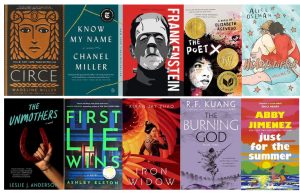As a Music Education Major, I’ve gotten to do clinicals in order to gain classroom experience. In my personal experience, this can mean anything from personal errands for the teachers to tutoring fractions with fifth graders. At my last clinical session, my teacher asked me for help with some prep work for a class later in the week. She teaches an English Language Learner [AG1] classroom, and her students needed to work on using descriptive words. She gave me her classroom laptop and asked me to compile a Word Doc with pictures from the internet of “normal” people doing “normal” things, smiling-woman-eating-salad stock photo-style. The plan was to show these pictures to her students and ask them to describe what was going on. My own personal agenda to influence the younger generation drove me to seek out pictures breaking down racial barriers, ableist standards, and gender roles, among other things. I included a photo of someone from the Middle East as the CEO of an office, people with disabilities cooking and playing sports, and a photo of a man who had presumably just returned from an extravagant shopping trip. I thought to look up a picture of a woman doing something a man would typically be thought of as doing. I did a quick google search of “girls fishing”. Seems innocent enough, right?
Wrong. The first 39 photos that showed up were too sexually explicit to be seen in any classroom setting, much less one for elementary school children. Number 40 was only so tame because it was of two girls around ten years old sitting on the edge of a dock, and after that one there were still pages and pages of fish-kissing and lip-biting and wet skin.
In a desperate effort to still believe in some sort of mistake on my part, I searched “boys fishing” next. My hopes were dashed as I scrolled down past photo upon photo of males of various ages with appropriate clothing simply casting a line. They did not stand in poses meant to draw attention to any specific parts of their bodies. Their eyes were not heavily made-up and half-lidded. There were no bikinis. Almost none were holding a fish as though they were about to go down on it, and the only ones that might be inappropriate for third graders were the ones where they had beers (though said beers were not being dribbled down their breasts or sensuously pressed against pouting red lips.)
I tried to find a picture of a girl fishing. Fishing involves no sexual organs whatsoever, and yet the overwhelming majority of pictures I found were hyper-sexualized. What’s the deal? Why is this the norm? The over-sexualization of women is not news to me, but I was shocked this week. I exist within a circle of friends who believe the same things I do about (at least) women’s rights and sexism. But a simple search thrown out into the wilderness of Google Images jolted me back into the real world, where a woman is often seen as no more than her cup size. This attitude pervades everything- advertising, film, literature, music, education, politics- the list goes on. It’s incredibly difficult to escape it. One must essentially become a hermit. No commercialized products, no mass-media, no nothing. I’m not suggesting we all live that way. We can’t fix a problem by ignoring it. What we can do is be conscious about our consumer choices and speak up when this sort of thing happens. Write articles, tweet, follow blogs, read the news, educate yourself, and speak so you are heard. It’s not easy, but it gets easier. “Feminist” is not a dirty word, and I suggest flinging your burning bra at anyone who claims it is.
There’s no one person driving the oppression bus, and it’s been down nearly every street, picking up as many riders as it can carry. We can’t change its route, but we can all stand up and get off. Here’s your stop.





Be First to Comment